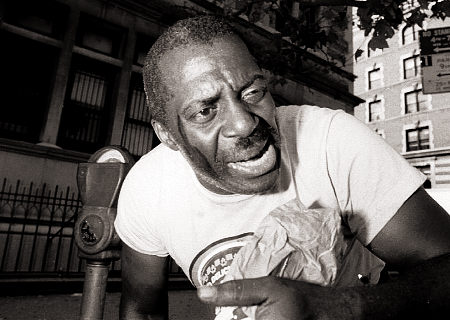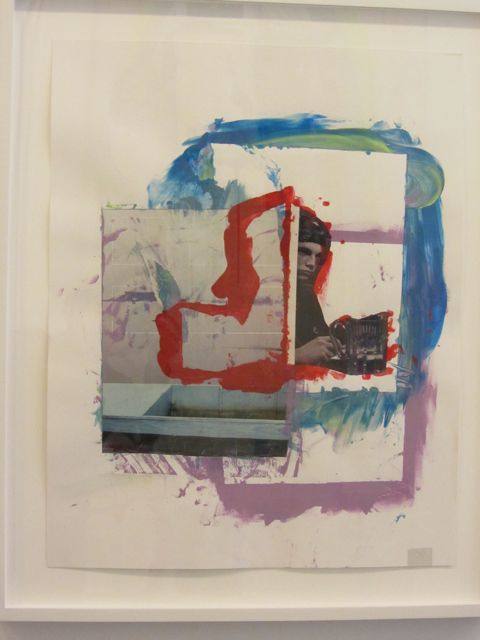The bad old days: Larry Hogue, "The Wild Man of 96th Street," in 1993.
NEW YORK POST
July 27, 2012
Homelessness, Inc.
by James Panero
The social-services industry’s war on the Upper West Side slows, but it never ends.
Just last week, Robert Hess of the homeless-housing group Aguila informed Community Board 7 that he means to build a 400-person “super shelter” on West 95th Street.
So what? you say. The neighborhood has never looked better.
I agree — and I’ve lived there most of my life.
Yet I recall how, starting in the 1970s, the neighborhood descended into chaos — because a coalition of politically connected developers, nonprofits, labor unions and government agencies did its utmost to turn the area into a dispensary for social services.
Under cover of compassionate rhetoric, the social-services industry used public funds to turn the Upper West Side’s private residential buildings into welfare hotels, homeless shelters, halfway houses and methadone clinics — inundating the neighborhood with crime, homelessness and drug abuse.
Today, the balance has tilted toward gentrification, but several recent reversals show that we can’t take the gains for granted.
Whenever real estate stagnates, the industry spies an opening. In a depressed housing market, it has greater purchasing power. Back in the 1990s recession, New York magazine declared, “Small business is no longer the dominant industry on the Upper West Side. Homelessness is.” The city was going broke, yet there was “explosive growth of the social-service sector.”
The influx of undesirable new residents drove rent-paying tenants out of their apartments. The worst off were forced into the streets and thus into the hands of the homelessness industry — which housed them at four times the cost, sometimes in the same buildings they’d been driven out of in the first place.
The rising disorder helped the industry buy up Upper West Side housing more easily. The obvious public presence of a mentally ill population also let politicians claim that the need for social services was growing. In fact, the rise of the social-services agencies was what had introduced that population in the first place.
Lately, the industry has zeroed in on the neighborhood’s SROs — buildings with “single-room occupancy” apartments. It aims to import and house the most destructive populations it can find — like people with both mental-health problems and drug dependency, a dual diagnosis known in the industry as MICA (for “mentally ill, chemically addicted”).
Placing a MICA population in what is known as “supportive housing” secures the highest possible government funding. The agencies also plant these profoundly troubled new residents alongside the remaining SRO tenants to drive them out.
Aaron Biller, president of the local group Neighborhood in the Nineties, describes the fight as a game of Whac-A-Mole: The industry pops up in one building after another.
Take St. Louis Hall, a six-story residence on 94th Street, just steps from Riverside Park. The Lantern Organization, a nonprofit housing developer, and its for-profit wing, the Lantern Management Group, bought the building to convert it into a MICA facility. Even as it adds another story, Lantern is now trying to push out existing tenants by threatening to house them side by side with the MICAs. For each “special-needs” tenant that Lantern can squeeze in, investors can earn more than $3,000 a month from government agencies paying to house them.
For a while, SRO owners tried to keep their buildings out of the industry’s hands by turning them into European-style budget hotels. The regular tenants often cheered the change, since it meant new amenities and added security and staff. Local merchants welcomed the tourist trade.
But our local political leaders thought otherwise. In 2006, City Councilwoman Gale Brewer teamed up with state legislators Richard Gottfried, Linda Rosenthal and Liz Kreuger to outlaw the new hotels — leaving the SROs at the industry’s mercy.
Late in 2010, I watched as one building, the Alexander Hotel on 94th Street, signed a contract with Samaritan Village, a Queens-based substance-abuse and mental-health center, to convert it into a 200-bed homeless facility. The community fought that conversion to a stalemate. But now comes Aguila, out to put a 400-bed shelter on 95th.
Within the last two weeks, a deranged man, Bernardo Paulino, who’d been living in a shelter for HIV patients on West 95th, allegedly stabbed the desk clerk to death. Across town, Curtis Forteau, a schizophrenic homeless man, randomly attacked Sabatha Tirado with pepper spray and a knife, cops say.
Passing through a revolving door of city agencies, New York’s mentally ill homeless population is a time bomb. That’s why a “fair share” law in the City Charter requires that social-services facilities be evenly distributed through all neighborhoods. Yet West 94th and 95th streets alone have seen a half-dozen homeless shelters, treatment centers and halfway houses proposed in recent years.
A 2008 survey revealed that of the supportive-housing units across Manhattan, 21 percent — 1,978 units — were on the Upper West Side. The Upper East Side, by comparison, had 93 units.
The Upper West Side is known for its social compassion, but that compassion has long been abused by developers and politicians who profit off failure in the neighborhood. More and more, my neighbors have realized what’s going on.
For the moment, the neighborhood remains beautiful and vital — but the battle for the Upper West Side is far from over.
Adapted from the Summer issue of the Manhattan Institute’s City Journal.
UPDATE: As I mention in my article, the "dual diagnosis" homeless are known as MICA, for "mentally ill chemically addicted." They are most in need of assistance, but even when the gov't pays out $3000 per person a month to the homelessness industry, they don't get the care they need.
After this editorial came out, homeless residents from two different shelters independently called me up to express agreement with my piece. The policy of warehousing these people in residential communities is a failure--a short sighted government attempt to save money without consideration of the long term costs or collateral damage to communities. Willowbrook, a deplorable institution for mentally disabled children in Staten Island exposed in the 1970s, was a true disaster, but the mass deinstitutionalization that resulted has now gone to the opposite extreme.
One solution is that we need to reconsider re-institutionalization and put resources into modernizing our mental health institutions. Some observers have considered calling such a movement "FORMICA," because it would actually help these patients in need rather than just the social services profiteers.


